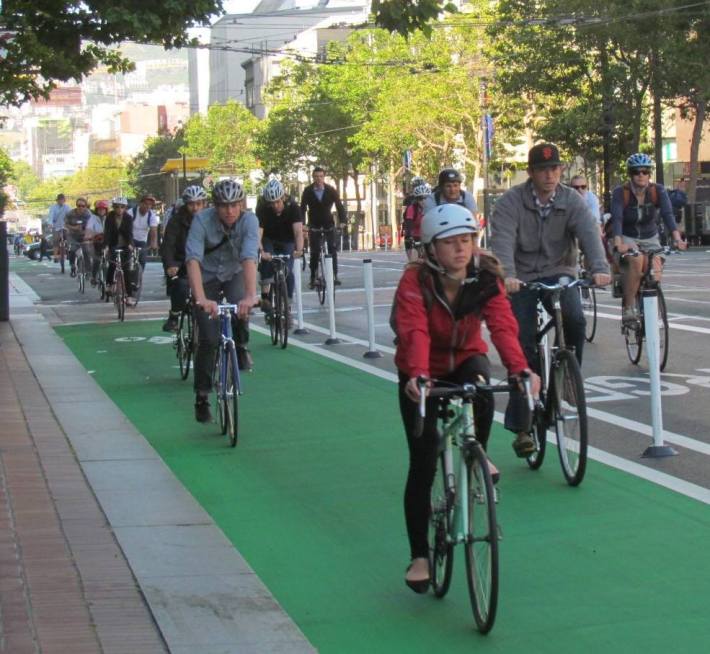
A bill that would make it easier for California cities to build protected bike lanes was passed by both houses of the state legislature this week and only awaits Governor Jerry Brown's signature.
The bill, A.B. 1193, was authored by Assemblymember Phil Ting (D-San Francisco) and sponsored by the California Bicycle Coalition.
The bill serves several purposes. First and foremost, it requires Caltrans to establish engineering standards for protected bike lanes or “cycletracks," a new category of bike lanes for cities to use.
At the same time, it removes a provision in the law that requires that any bike lane built in California adhere to Caltrans specifications, even if it is built on a local street that is not under Caltrans' jurisdiction. This frees up local jurisdictions to choose other guidelines, such as the National Association of City Transportation Officials' (NACTO) Urban Bikeway Design Guide, if the Caltrans standards do not adequately address local conditions.
Caltrans endorsed the NACTO Urban Street Design Guide earlier this year but has not adopted it, meaning that cities that want to build separated bike lanes must still go through a process to get an exemption.
Last-minute negotiations on the bill addressed concerns about liability by adding several conditions that have to be met before non-Caltrans criteria can be used. A “qualified engineer” must review and sign off on a protected bike lane project, the public must be duly notified, and alternative criteria must “adhere to guidelines established by a national association of public agency transportation official,” which means the NACTO guidelines could be used whether Caltrans has officially adopted them or not.
And unfortunately for lay people, Caltrans balked at removing its convention of naming bike lane types by "class" and numeral, saying it is just too embedded in its documents. So the new protected bike lanes category would be officially named "Class IV Bikeways," adding to Class I Bikeways (bike paths or shared use paths), Class II bikeways (bike lanes), and Class III bikeways (bike routes). Memorize that.
“We’re very excited to have gotten to this point after months of harder-than-expected negotiations and stalwart support from Phil Ting," said Dave Snyder of the California Bicycle Coalition. "He really wants to see protected bikeways get more popular.”






